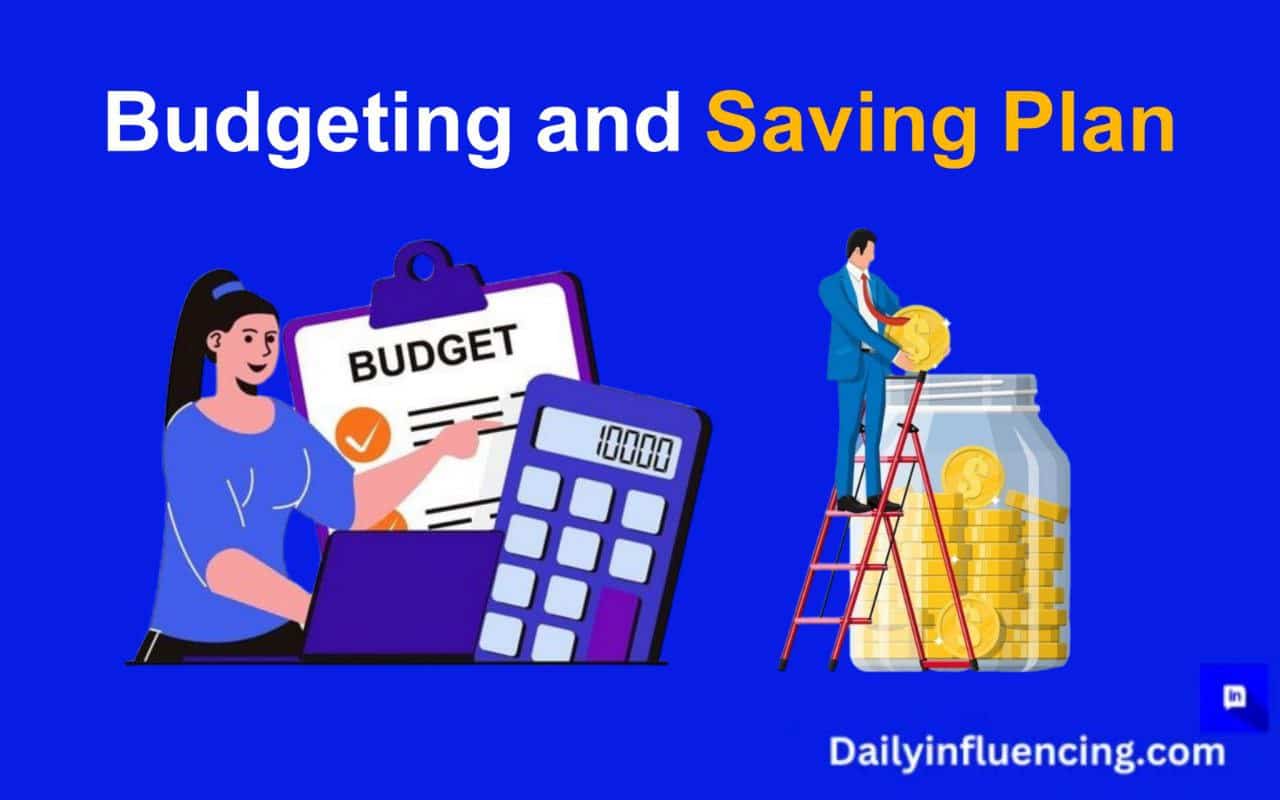
Master Budgeting and Saving with expert tips on Financial Planning, Debt Management, and Long-term wealth Creation.
One of the Key Components to mastering Personal Finance is Budgeting and Saving. Creating an effective budget and saving plan is crucial for achieving financial stability and security. With rising expense and uncertain economic conditions, managing finances wisely has become more vital than ever.
In this article, we will explore how to create an effective plan that allows you to manage your finances efficiently while also enabling you to reach your financial goals, it will outline the necessary steps, techniques to help you take control.
Understanding Budgeting and Saving
The Importance of Budgeting
Developing a budget is the cornerstone of financial stability and resilience. A budget serves as a roadmap for your finances, providing a clear picture of your income, expenses, and savings. This not only helps you avoid overspending but also prioritizes your financial goals.
Transitioning from spontaneous spending habits to a disciplined budgeting approach may seem daunting at first. However, the benefits are significant. Research indicates that individuals who maintain a budget typically save more money and achieve financial goals at a faster rate.
Therefore, establishing a budgeting strategy is essential for building a secure financial future.
Key Components of a Budget
To create an effective budget, several key components should be considered:
1. Income: This includes all sources of revenue, such as salary, bonuses, and side hustles. Documenting your total income will provide you with a solid foundation for your budget.
2. Fixed Expenses: These are regular, unavoidable costs such as rent or mortgage payments, insurance, and utility bills. Fixed expenses generally remain constant from month to month.
4. Savings and Investments: Allocate a portion of your income towards savings and investments. This can be for emergencies, retirement, or other goals.
5. Debt Repayment: If you are carrying debt, set aside part of your budget to prioritize payments. Reducing debt is crucial for enhancing overall financial health.
The Importance of Savings
With a budget in place, the next crucial step is savings. Saving money offers financial security and peace of mind. It creates a safety net for unexpected expenditures, enables future investment and helps achieve long-term financial goals.
Types of savings
1. Emergency Fund: This is the foundation of financial stability. Aim to save three to six months’ worth of living expenses to prepare for emergencies like medical bills, vehicle repairs, or job loss.
2. Short-term Savings: For upcoming expenses or events, such as vacations or major purchases, short-term savings accounts can keep funds separate and accessible.
3. Long-term Savings: This type of savings often relates to retirement. Consider contributing to employer-sponsored plans like a 401(k) or personal retirement accounts such as IRAs.
4. Investments: Once you have adequate savings, consider investing in stocks, real estate, or other vehicles that can generate long-term growth.
How to Develop a Budget
Step 1: Track Your Spending
Before creating a budget, it is wise to track your spending for a month or two. Use apps, spreadsheets, or even pen and paper to record every expense. This process can reveal patterns in your spending behavior, allowing you to make informed decisions.
Step 2: Set Clear Financial Goals
Once you understand where your money goes, it’s time to establish your financial goals. These goals should be specific, measurable, achievable, relevant, and time-bound (SMART). Whether you want to save for a vacation, a down payment on a house, or retirement, clarifying your objectives will provide motivation and direction.
Step 3: Choose the Right Budgeting and Saving Method
A variety of budgeting methods are available, each with its strengths. Consider the following approaches:
A. Zero-Based Budgeting: Every dollar earned is allocated to expenses, savings, or debt repayment, resulting in a net zero at the end of the month. This method encourages accountability.
B. 50/30/20 Rule: This rule suggests that you allocate 50% of your income to needs, 30% to wants, and 20% to savings and debt repayment. This method is straightforward and easy to implement.
D. Priority-Based Budgeting: This method allows flexibility by prioritizing your spending on what matters most to you, thus enabling adjustments as needed.Select a budgeting method that resonates with you and fits your financial style and lifestyle.
Step 4: Create Your Budget
Using the information gathered from your spending tracking and your chosen budgeting method, begin formulating your For instance, income, fixed & variable expenses, saving like emergency fund, Debt Repayment
Step 5: Monitor and Adjust
Creating a budget is not a one-time task. It’s vital to review and adjust your budget regularly. Life circumstances can change, impacting your income and expenses. To adapt, make a habit of revisiting your budget monthly.
During these reviews, assess what areas are working and what aspects may need adjustments. If you consistently overspend in one category, consider reallocating funds or cutting back in other areas. Having the flexibility to tweak your budget as needed will enhance its effectiveness in managing your finances.
Strategies for Effective Saving
Implementing a strategy for effective savings can yield significant benefits. Here are some approaches to consider:
1. Pay Yourself First: Treat savings like a non-negotiable expense. Set up automatic transfers to savings accounts right after receiving your paycheck.
2. Cut Unnecessary Expenses: Review your variable expenses and identify areas to cut back. For instance, consider brewing coffee at home instead of daily coffee shop visits.
3. Take Advantage of Discounts: Whenever possible, utilize coupons, seasonal sales, or promotional offers to reduce spending.
4. Seek Passive Income: Explore opportunities to earn passive income, such as dividend-paying stocks or rental properties. This can significantly boost your savings.
5. Set Milestones: Break larger savings goals into smaller, manageable milestones. Celebrating achievements along the way can motivate continued saving.
Integrating Budgeting and Saving
This necessary means focusing on both budgeting and saving processes for ensuring the efficiency of financial management. Integration ensures:
- Aligned goals: Budgeting goals and saving goals are intertwined.
- Optimized resource allocation: Money is well channeled to costs and to savings.
- Increased financial resilience: Budgeting and saving work hand in hand in helping to overcome a difficult financial period
By integrating budgeting and saving, individuals can:
– Maximize savings potential
– Minimize financial stress
– Obtain sustainable goals
Conclusion On Budgeting and Saving
Budgeting and saving are fundamental aspects of personal finance that can significantly affect your financial stability and future prosperity.
By understanding the importance of budgeting, tracking spending, setting financial goals, creating and adjusting your budget, and implementing saving strategies, you create a sustainable approach to managing your finances.As you develop your custom budgeting and saving plan, remember that the journey to financial health is ongoing.
Adjust your strategies as your life circumstances evolve. With discipline and commitment, you can build a secure financial future that allows you to live comfortably and confidently.In a world filled with uncertainties, having a solid financial plan in place can provide peace of mind and open up a myriad of opportunities.
Now is the time to take charge of your finances and make the changes necessary to lead a financially secure and fulfilling life.
FAQs on Budgeting and Saving
General Budgeting
Q1: What is budgeting?
Answer: Budgeting is the process of allocating income towards expenses, savings, and debt repayment.
Q2: Why is budgeting important?
Answer: Budgeting helps manage finances, reduce debt, and achieve long-term goals.
Q3: What are the key components of a budget?
Answer: Income, fixed expenses, variable expenses, savings, and debt repayment.
Saving Strategies
Q1: How much should I save?
Answer: Aim to save 10-20% of your income for short-term and long-term goals.
Q2 What types of savings accounts are available?
Answer: High-yield savings, money market, CDs, and retirement accounts.
Q3: How can I automate savings?
Answer: Set up automatic transfers from checking to savings accounts.
Budgeting Methods
Debt and Emergency Funds
Q1: How do I manage debt while saving?
Answer: Prioritize high-interest debt repayment and allocate funds accordingly.
Q2: What’s an emergency fund?
Answer: Savings for unexpected expenses (3-6 months’ worth).
Q3: How do I rebuild credit?
Answer: Make timely payments, reduce debt, and monitor credit reports.




